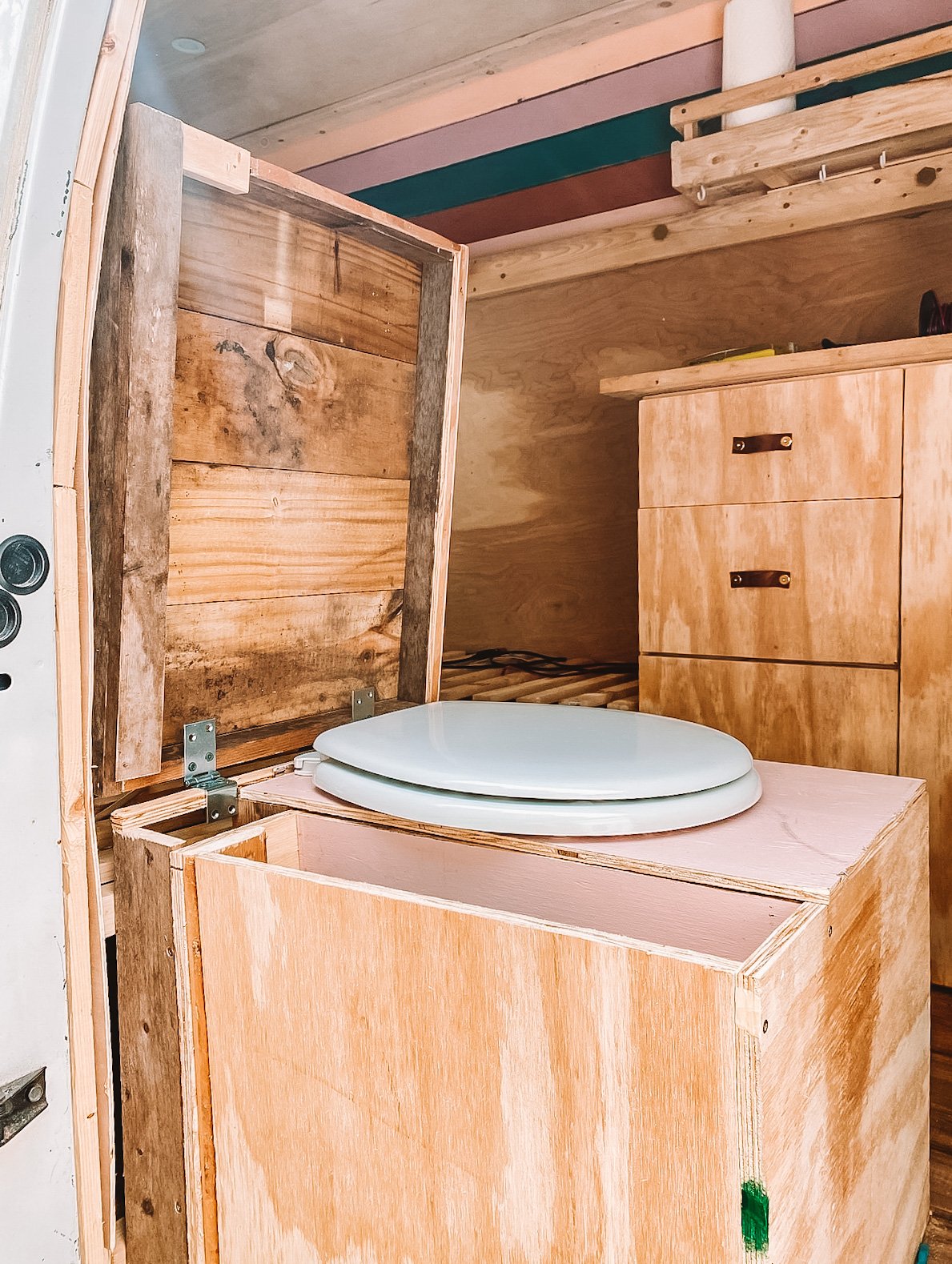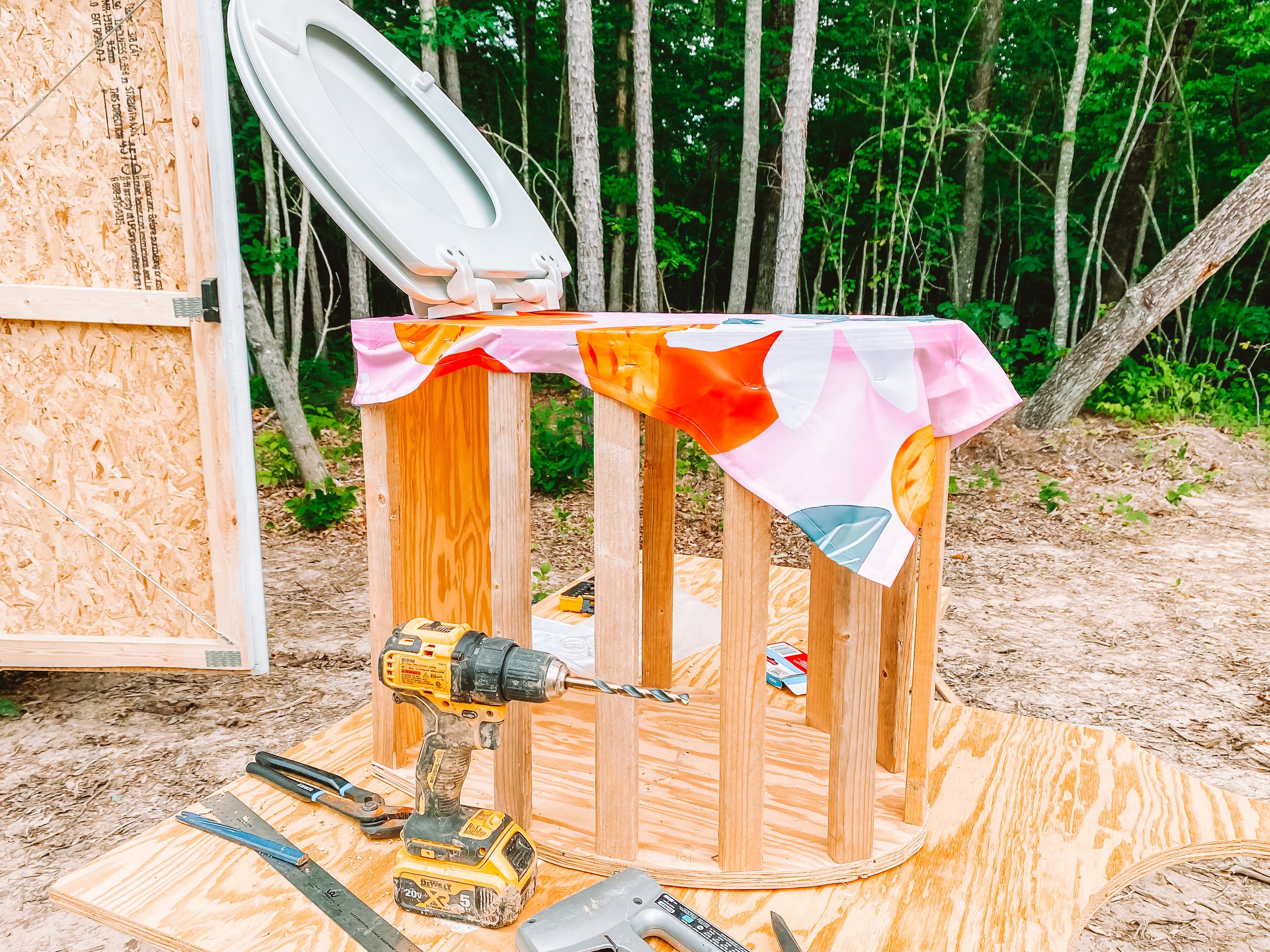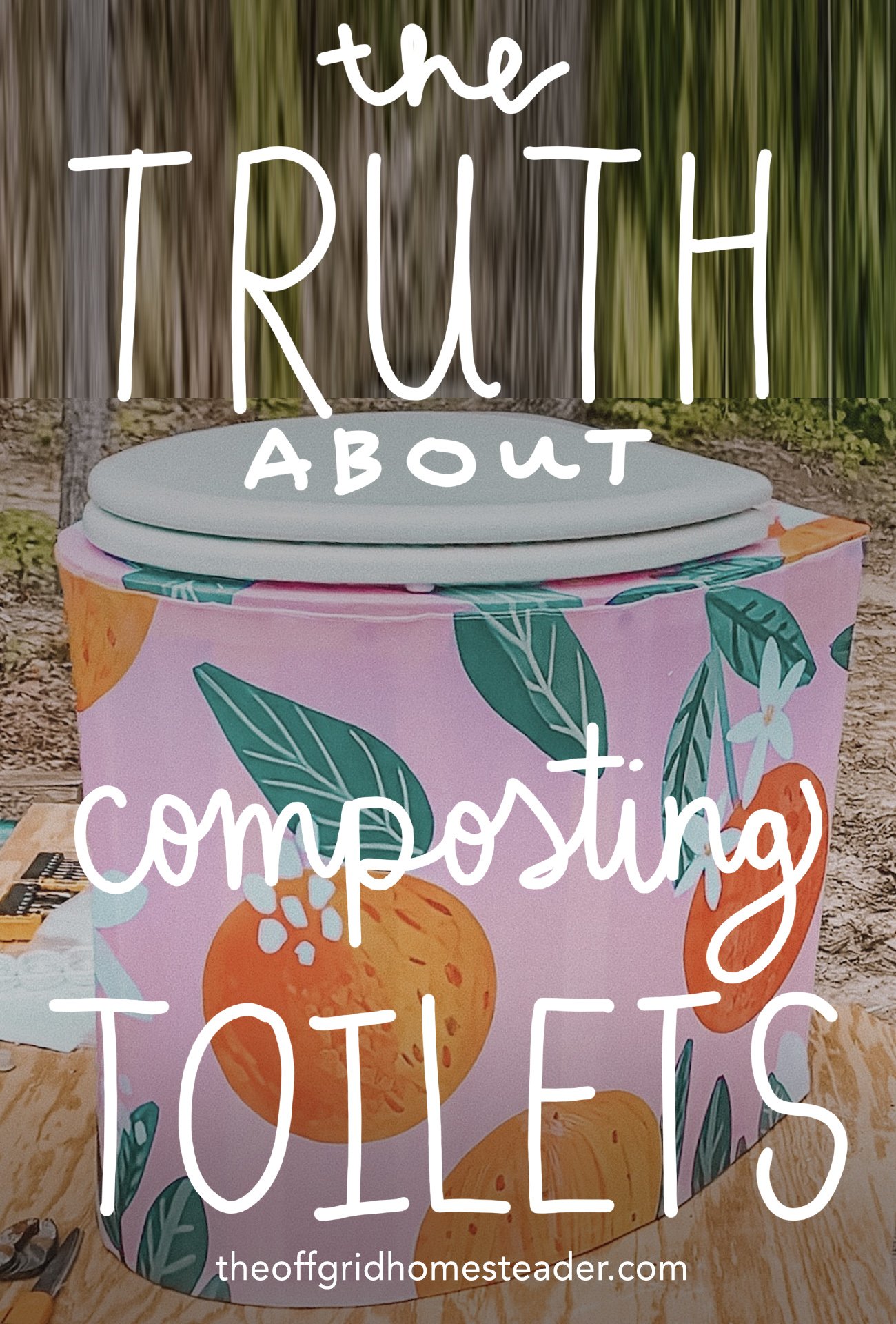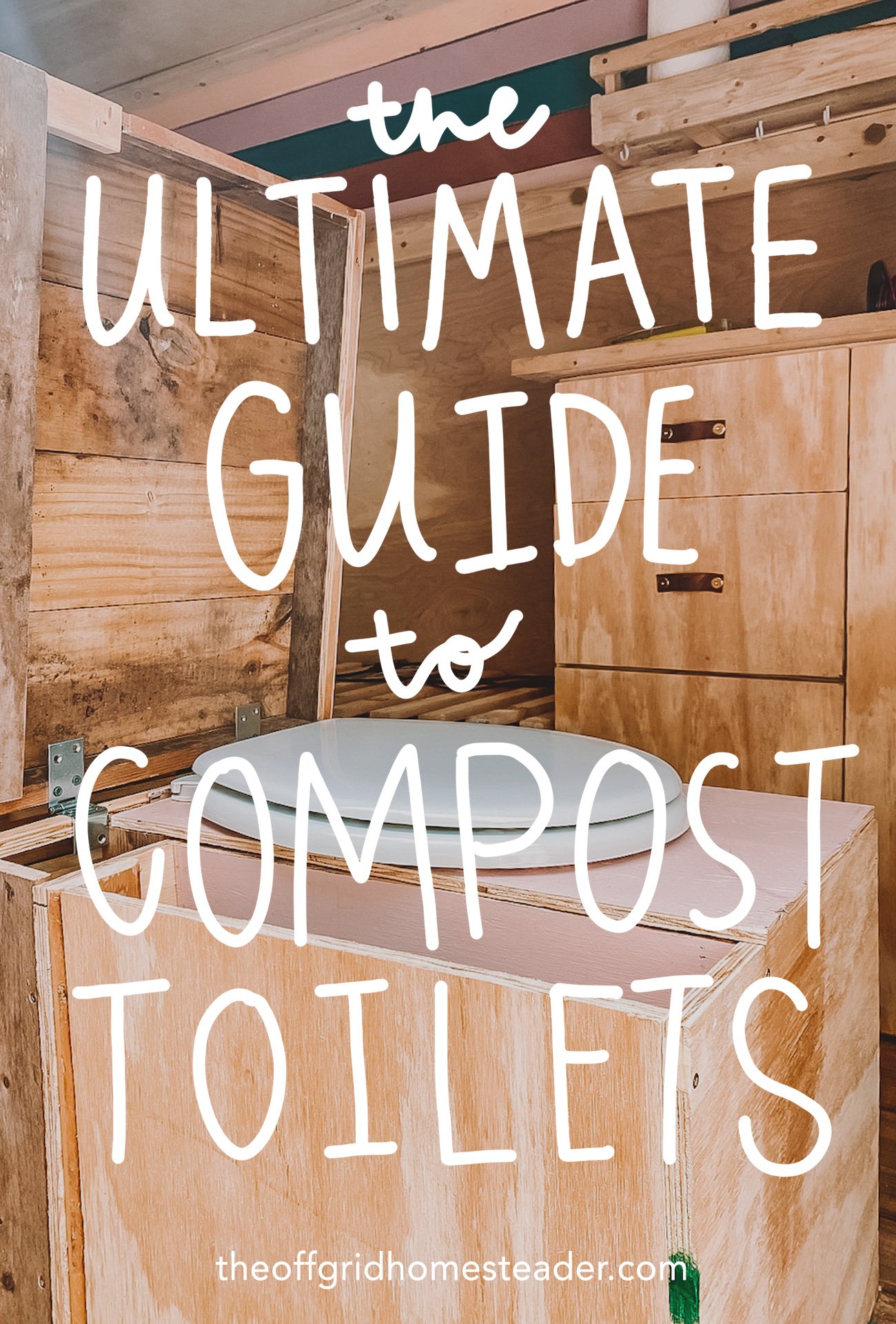Everything You Need To Know About Off Grid Composting Toilets
If you have found this post, you probably are looking into putting a compost toilet in your off grid home, cabin, camper van, or other space where an alternative toilet is needed. You’ve come to the right place! A composting toilet is a great way to put a toilet almost anywhere. It’s also a great way to use less water. Did you know that every time you flush a toilet you use 1-2 gallons per flush? Of clean water? That is a lot of perfectly good clean water!
In all reality, a composting toilet can solve a lot of problems when you are setting up and living off grid. No water? No electricity? No problem! As with everything you need to check with your local municipalities about what is legal in terms of composting toilets and waste management. Don’t take anyone else’s word for it about anything when it comes to codes and zoning. You have to do the research yourself.
What is a composting toilet?
At it’s most basic core, a composting toilet is a vessel that you can use the restroom in that you add organic matter to after each use. The resulting mix can be composted in a few different ways. No water is used,
When it comes to installing a composting toilet, there are basically 2 options. There are complete systems & the DIY route. If you are purchasing a complete composting toilet system, you are going to be paying a lot more money. If you are going the DIY route there are many options and, depending on your budget, you can build something way more comfortable and customized. If you have $700-$1200 to spend, a complete system can make your life much easier. However, there are cons to both options.
The DIY route.
There are two different basic options when you are going the DIY route. Technically you can put a toilet seat on a 5 gallon bucket and you have a composting toilet. The other option is to use a urine diverter.
What are the basic elements of a DIY composting toilet?
Most composting toilets utilize:
a fan system to get rid of smells
materials to build the toilet structure
organic matter
The most common bucket by far is a 5 gallon bucket, but some systems can accommodate a larger bucket. You can practically use any toilet seat you want (for example we have a soft closing elongated toilet seat and we love it!) But let’s talk about everything else…
Should you use a urine diverter?
A urine diverter separates liquids from solids in the toilet. It surely isn’t necessary, but I would argue that it makes life a little easier and less smelly. Some people think that the solids in the toilet are what smells, but in reality a composting toilet’s smell comes from urine mixing with the solids. It is possible to put all solids and liquids together and cover with so much organic matter that the smell of the mix can be covered up. But if you are concerned about smell, using a urine diverter is one step in helping combat that. Mixing the two will also cause you to empty your main bucket more frequently.
You may be thinking, well who ISN’T worried about smell? The thing is, not everyone is putting their composting toilet in the same place. If you are putting a composting toilet in your camper van or RV, your bathroom is more than likely going to be a small enclosed space that will affect your direct living quarters. In these cases the toilet may not even have its own room. If you are putting your composting toilet in a more open place outside in a well ventilated area, like an outhouse type thing, the smell won’t be as important to worry about. Out houses don’t smell amazing, but they aren’t in your house so you kind of just deal with it. The location of your composting toilet really might determine whether or not you need to use a urine diverter.
Where does the urine go?
If you are using a urine diverter, you will need something to capture the urine in. The bucket we use is actually the Nature’s Head urine bottle. This is actually a replacement piece from the Nature’s Head Composting Toilet, but it’s our favorite option. You can really use any container you want. People will even use old bleach bottles. The Nature’s Head one is my favorite because it’s the only thing I’ve found that has a strap on the top for carrying. It also has a lid making transportation easy and very clean. This is a genius design to me because when I go to empty the urine container, I don’t want to touch the container at all. With something like a bleach container you have to grab it from the top opening. You could use the lid to prevent splashing, but I still don’t love the no strap option. But old bleach bottles are practically free, so it’s a great option if you are trying to keep your project low budget.
Should I vent the composting toilet?
Venting your composting toilet can take away any smells that emit from it. If your toilet is in a multi-set space, this is something you will want to do. You wouldn’t want to go to sleep smelling the smells of a composting toilet that is 3 ft. away from you.
Most venting options utilize a small computer fan, but you will only have this ability if you have some sort of electricity. A small portable battery and a solar panel could keep your fan going and is likely the easiest setup. If you already have electricity wired near your toilet, then venting would be pretty easy! You can still vent without electricity, but the design will be a bit more particular and depends on the space you are putting it in.
What organic matter should I use?
Putting organic matter in your toilet after every use is important for keeping the smells suffocated and also important in actually creating compost out of the solids. There are many options when it comes to the organic matter and some are more sustainable than others. We prefer sawdust and have some left over from getting our trees milled. We really like this option because it’s free and it’s a by-product that already exists. Other options to explore are coconut coir, wood ash, etc. Anything you can get in large quantities that is finely ground. The finer the matter is, the better it will cover up smells.
How do you build a composting toilet?
We actually have 2 videos where we built 2 different composting toilets and they both have great information. Building your own toilet is very customizable. Our first composting toilet had a lid that closed over the whole toilet to hide it. This is a great option for small space like a camper van. In that way you can hide your toilet and the cover can even be used as seating when the toilet isn’t in use.
Our second composting toilet is our favorite. While we made ours, we did purchase some parts through The urine diverter is different and so is the shape of the whole structure. It looks more like a toilet. The design could be changed if you wanted your toilet to be more incognito, but works great as is. Check out both of these videos to get an idea of what you will have to do to make your own!
If you are making your own composting toilet one downside is that you will have to wait a long time for your waste to turn into compost. You will also have to come up with a plan for the storage of that non-composted waste. We put a lid on our bucket and set it aside until it has composted down.
The Complete System Route
Taking everything else into consideration, you might rather just buy a toilet that already contains everything you need. Although this is a more expensive route (like 5 times more expensive), DIYing just isn’t for everyone. Something to think about is that complete systems actually use a little bit of electricity. So if you don’t have electricity where the toilet is going, you won’t necessarily be able to use all the features. The most popular and most loved is the Nature’s Head Composting Toilet.
These composting toilets usually contain a urine diverter and a compartment where solids join your composting medium. What is nice about the compost toilets that you buy is that they will turn your waste into compost much more quickly.
What we’ve learned from having a compost toilet
Not all urine diverters are the same and if yours fails, you will have problems. We have learned this the hard way. There are all kinds of versions, but this is our favorite one. It is the most fool proof one to use.
The toilet needs to be perfectly level to work properly. This may seem obvious, but when you have to throw a toilet on raw land, level spots are hard to come by. Definitely take the time to level a spot of find an already level spot.
The urine smells even on its own. Separating the two definitely helps, but if you aren’t venting, you can still expect a little bit of a smell. Keeping the urine bottle clean will also help keep the smell down.
An elongated toilet seat is better to accomodate the urine diverter. The regular size toilet seat makes it more possible for solids and liquids to make it in the wrong section just by sitting on it too far forward or backward.
Whatever toilet you decide to use, you need to consider how you will use your composted waste. The general rule of thumb is that compost from human waste should be used around non-edible plants. There are differing opinions on whether or not the dangerous bacteria has gone from composted human waste.








